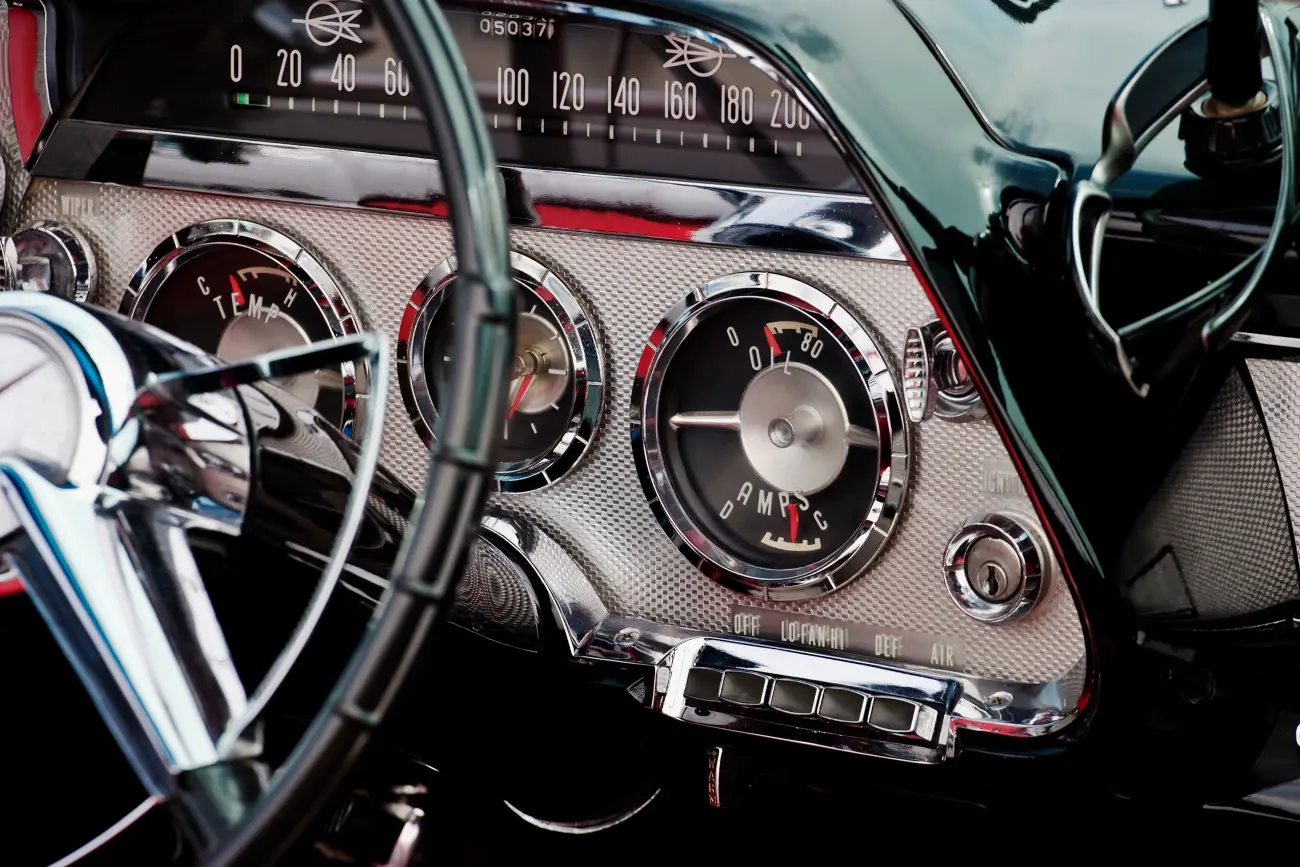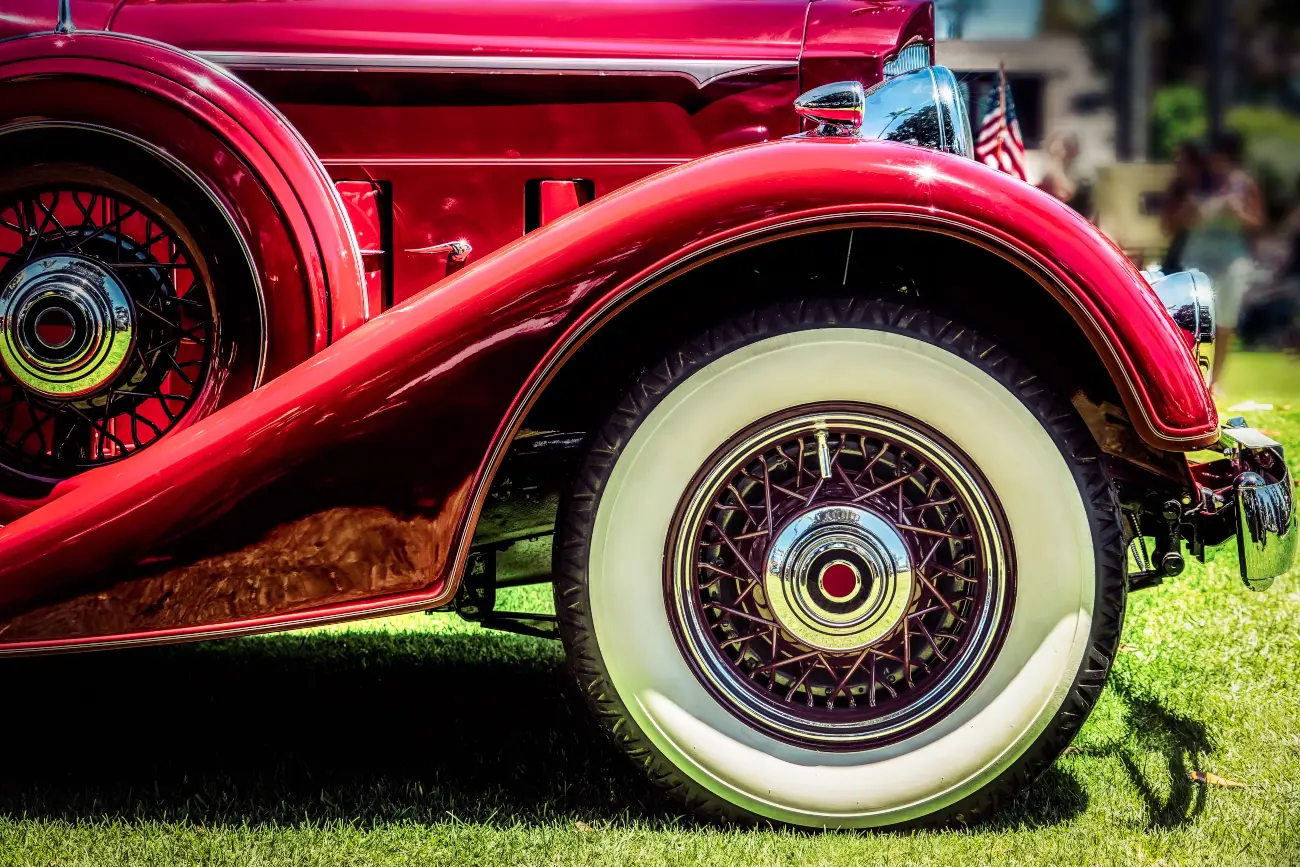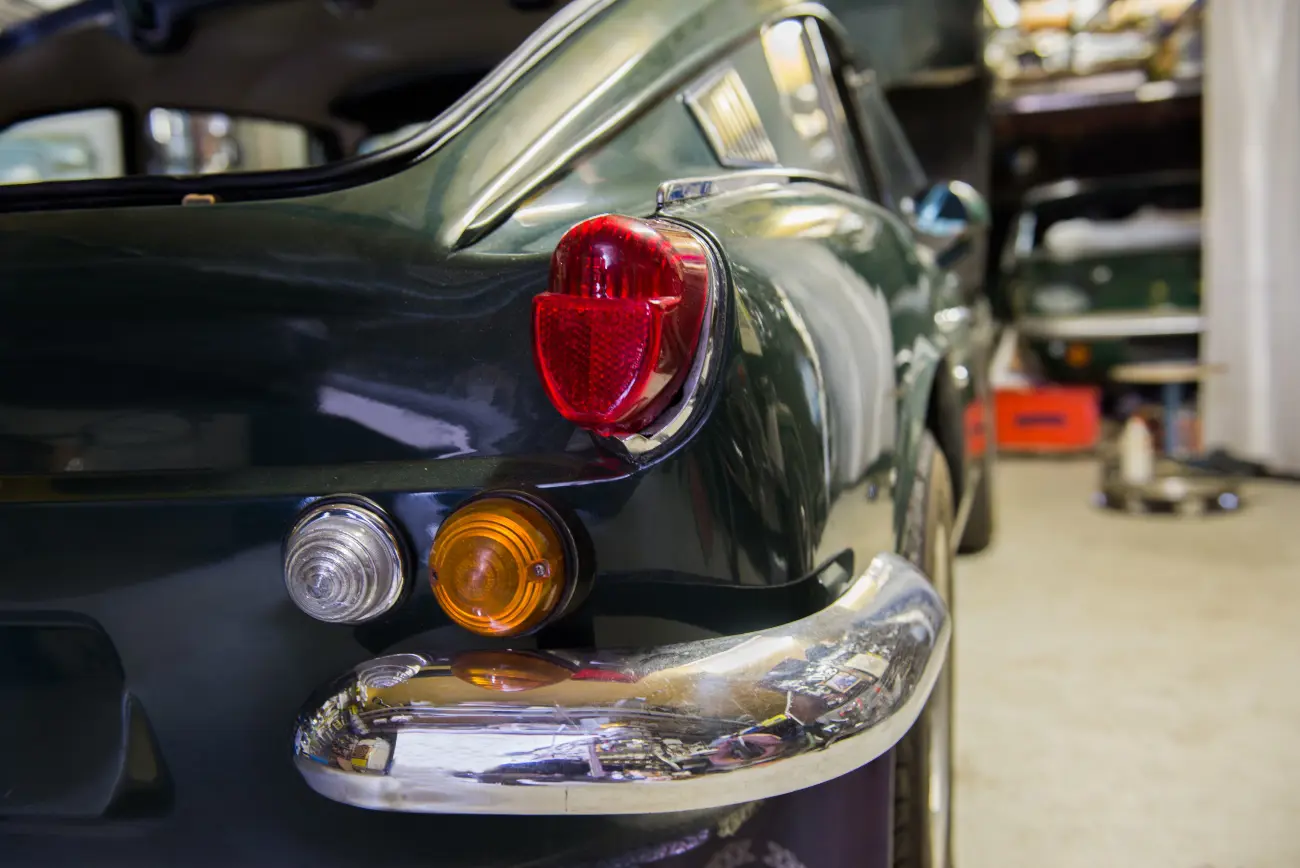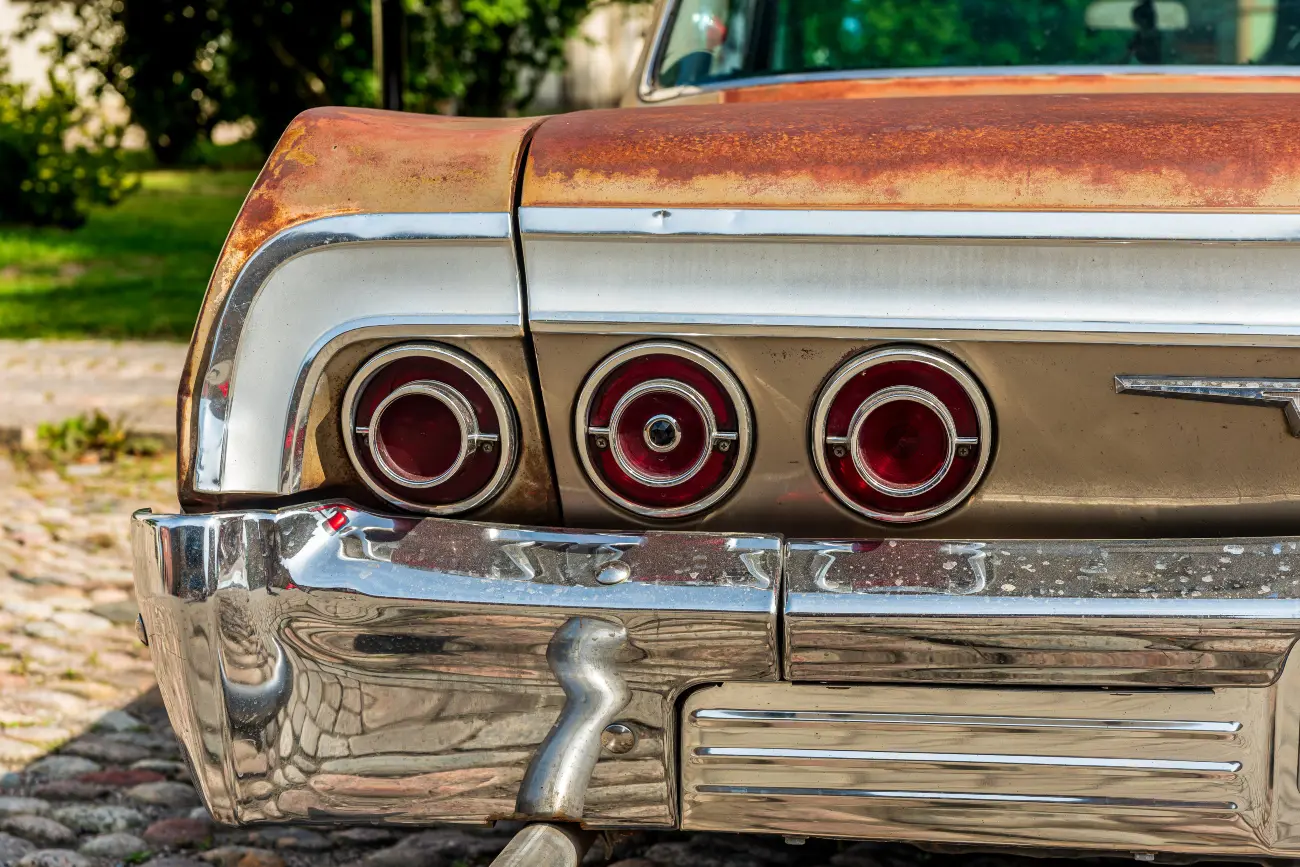10 classic car checks to do before your next drive
31 May 2022
We were intrigued by the recent news that around 20 per cent of UK classic cars were failing their MOT. A slightly concerning statistic, you might think – until you remember that many of these cars are not legally required to submit to an MOT in the first place.
That's because UK legislation states that cars over 40 years old no longer have to take the MOT test. This is, in fact, one of two exemptions that cars acquire when they reach the big four-zero: the other, of course, is road tax.
Yes, cars aged 40 or over are excused both annual MOTs and road tax – which means that a new generation of cars become tax- and MOT-exempt each year. We discussed this in a recent article in which we revealed that early editions of cars like the Triumph Acclaim, E28 BMW 5 Series and Vauxhall Cavalier MK2 were now entering the tax-free age group.
This means, of course, that many of these seasoned vehicles lining up for MOTs are probably not legally obliged to take the test. However, plenty of owners still like to put their cars through the test to ensure that they are still roadworthy and for their own peace of mind.
That's a course of action that we wholeheartedly applaud here at Lancaster Classic Car Insurance. We imagine that these are sorts of drivers who also take the utmost care over the restoration and maintenance of their vehicles – and spend time seeking out the most suitable Lancaster classic car insurance.
Getting down to the statistics, we learned that – between January 2019 and June 2021 – some 121,204 cars took a voluntary MOT. Of those, some 22,300 (approximately 18.4 per cent) failed the test. These findings came about when BookMyGarage.com, a vehicle service booking platform, submitted a Freedom of Information request to the Driver and Vehicle Standards Agency.

Drilling down a little deeper into the figures, we learned that the marque with the highest failure rate was the US brand Dodge, with a little over half of their cars (55.2%) not making the grade. A cause for concern? Yes and no: after all, classic Dodges are pretty rare in the UK, and these results accounted for just 143 tests from that entire 121,000-strong sample.
The marque with the second highest failure rate is a far more familiar name to UK drivers, however. Almost a third (31.9%) of the 19,154 Volkswagens going in for a voluntary MOT didn't pass the test's essential safety and emissions targets. Not far behind was British Leyland, with a quarter of their cars coming up short. That probably means a far number of Rover SD1s, Triumph Stags, Morris Marinas and Austin Allegros failing to make the grade.
Elsewhere, we were interested to see that the classic car brand featuring the most voluntary MOT entries was a firm favourite of ours: MG. Some 22,974 of the sporting marque's cars went in for an MOT, with just under four in five passing the test. We're not surprised by the prevalence of MGs in the data – the marque has consistently been one of our most popular makes for classic car insurance.
We're very glad to see that, on the evidence of this strong showing for voluntary MOTs, MG owners are caring for their classics so well.
Impressively, a few marques came through the classic MOT survey without recording a single fail. These included Bentley, Wolseley, Opel, TVR, Saab, Peugeot and Toyota. Of these, we're most impressed by the final three marques, whose classic cars are still present in reasonably large numbers on our roads, making their 100% success rate all the more commendable.
One last fascinating statistic from the survey was that modern classics were more at risk of failure in the optional MOT than their older counterparts. Specifically, 1970s cars emerged as three times more susceptible to MOT failure than vehicles from the 1950s.
Enough of the statistics, however. What we want to answer for you now is: How should you keep your own classic car in roadworthy condition, and what regular checks should you carry out to ensure that your car is safe every time it takes to the road?
Here are our top ten checks to make before your classic leaves the garage. You'll probably also find our definitive guide to classic car restoration to be a useful read.
- Check your tyres
- Monitor your oil level…
- … And check other essential fluids, too
- Make sure you've got enough fuel
- Check your lights are working properly
- Make sure your car battery is in good health
- Check those grease points
- Monitor windscreen and wipers
- Have a special parts box handy for every drive
- Make sure your classic car insurance is accurate and up to date
1. Check your tyres
They can get a bit forgotten behind the engine, brakes and other more complicated parts of a car's anatomy: but tyres do an absolutely essential job, and should never be neglected. After all, they're the only part of the car that makes contact with the road. This means that they must always be kept in good condition to ensure that your vehicle has enough traction and doesn’t go skidding off the road.
With this in mind, we strongly recommend making regular checks on the health of your tyres. Firstly, check the sidewalls of each tyre for any damage or small cuts that could lead to a puncture. Also monitor the general condition of the rubber all around the tyre. If it's looking cracked and dry, it may well be time for a new tyre.
After this general scan, you want to check two things in particular: tyre pressure and tread depth. For the latter, you must make sure that the treads on your tyres are deep enough to give the tyre the grip that it needs. The minimum tread depth here in the UK is 1.6mm. You may be familiar with the old 20p trick, in which you slide a 20p coin into the tyre tread grooves. If the outer band of the coin is now hidden within the groves, your treads are deep enough. But if you can still see some of that outer band (which measures – you guessed it – 1.6mm), your treads are now too shallow and the tyre must be replaced.
Don't forget to check your tyre pressures. Your car's handbook will have the recommended pressures. Having tyres inflated to the correct pressure will make your car safer – and will also save you money in fuel.

2. Monitor your oil level…
Your car engine always needs a decent supply of oil in order to run smoothly. Indeed, a car engine that doesn't have enough oil to lubricate it will run into serious trouble fairly quickly.
Why is this? Well, engines have many fast-moving parts, and these depend on oil to lubricate them, so that they don't grind against each other. Without that oil, the engine will quickly grind and seize up. Your car will stall – and, much worse, your engine may be damaged or even ruined.
Given this, it's crucial to monitor your oil levels. And remember that classic cars typically manage shorter distances between oil changes than their newer counterparts.
Thankfully, checking your oil level is a simple task. Just wait until your engine is cool, open up the boot and find the dipstick – the long stick used for monitoring the oil level. It will often have a yellow handle – if you can't find it, your vehicle handbook will be able to help.
Pull out the dipstick slowly and wipe off any oil. You can then push it gently back into the engine and remove it again: you'll now be able to see the level of oil in the engine. It should fall between the two markers on the dipstick. If the level is below the lower marker, there's not enough oil in the system, and you should top up. Use a small amount at a time, checking the dipstick level after each addition.
As well as checking your oil level, you should also monitor its quality. The latter is important because engine oil does degrade over time, becoming clogged up with particulates from the engine. If the oil looks clear, all is well – if it looks cloudier or darker, it may be time for a change.
3. … and check other essential fluids, too
Oil isn’t the only one of your car's fluids that you need to keep an eye on. Windscreen washer fluid also needs to be kept regularly topped up. This is particularly true during the summer, when both dust and insects are more prevalent and the windscreen will need more frequent wiping.
To check your windscreen fluid, look for a blue cap under the bonnet. Once again, if the level looks low, you should top it up with the correct washer fluid. Don't use tap water, as the lime present in the latter can be harmful to car engines.
Another fluid to be aware of is coolant. This is crucial for maintaining a correct running temperature in the engine. Once again, open up the bonnet and find the coolant tank – and only ever use the coolant recommended in the handbook.
Other fluids you may need to monitor are those for the clutch, brake and transmission systems. You may also need to check the fluid that lubricates your power steering, if your classic has this feature.
4. Make sure you've got enough fuel
This one probably sounds obvious, but it's surprising how often – having undertaken the other key checks – motorists forget to check whether they have enough fuel for a long journey.
Running out of fuel on the road can be a very stressful experience: taking the time to check, and to fill up at a familiar place near home before you set off, can save you a lot of worry. It's much easier to fill up soon after leaving home, at a place you're familiar with, than to hit the road and hope to find somewhere in unfamiliar terrain before the fuel runs out.
Note that fuel gauges on older cars can be more erratic than on their newer counterparts. You may want a specialist to check that yours is giving you correct information on your fuel levels. We wrote about the new E10 fuel and how it might affect your classic elsewhere on our site.
5. Check your lights are working properly
Remembering to check the performance of all your car's lights is crucial – but it can also be something of a seasonal task for many drivers, if they even remember to do it at all. After all, it's easy to forget the importance of lights during the summer months, when the days are longer and much less of your time is spent driving in the dark.
In reality, though, you should make sure that your lights are performing correctly at all times, as you never know when a longer or later drive will mean undertaking some of your journey in darkness.
A full lights checklist should include your headlights and indicators at the front, plus the rear and brake lights at the back, and perhaps even your hazard lights, too.

6. Make sure your car battery is in good health
The battery does the crucial job of starting up the engine, so it's crucial to keep it in good health, with the correct voltage flowing through it. Check the acid and water levels, and look for signs of corrosion around the battery terminals. Bear in mind that, during the winter months, the battery may have been working harder, thanks to the need for lights and heating.
You may also want to invest in a car battery tester – simple to use, and available from most car accessory shops. These range from simple devices that will tell you if the battery is charged, to more sophisticated models that will display the exact voltage. In the latter case, you'll want a readout of more than 12.4 volts when the engine is switched off, with around 12.7 volts being an ideal voltage.
7. Check those grease points
If your classic is older than, say, around 1980, it will probably have a series of 'grease points' – small openings where fresh grease can be added periodically, to make sure that moving surfaces aren't grinding against each other. This practice largely died out during the 1980s, as the grease itself became more durable and was expected to last the life of the car.
It's a good idea to carry out occasional checks on your grease points, to make sure that everything is well lubricated. If you're unsure, you may want to ask an expert or consult your car handbook.
8. Monitor windscreen and wipers
Faulty windscreen wipers are one of the most common reasons for cars failing their MOT. That should come as no surprise: being able to see clearly through the front windscreen is such a basic safety essential that we'd always recommend making regular windscreen health checks.
Be sure to check that the wipers are working correctly, and that the windscreen is not chipped or cracked. Some classic car insurance policies will include windscreen cover: check whether your own policy includes this valuable feature.
9. Have a special parts box handy for every drive
This is a nifty little trick that we'd recommend to all classic car owners. Keep a little box handy in the car, filled with some key parts that could prove helpful in the event of a problem or breakdown.
Parts we'd recommend include spark plugs, oil, and perhaps some spare bulbs. Think of it as another small insurance policy against anything going wrong – almost like a miniature version of the classic car insurance with which you protect your vehicle, year after year.
10. Make sure your classic car insurance is accurate and up to date
Talking of classic car insurance, we'd always urge you to make sure that your own policy is both up to date and accurate. It should have the correct current details about both your vehicle and its uses.
After all, you'll always set off on any trip hoping for a calm, uneventful journey, and 99 times out of 100 that's exactly what you'll get. However, on the rare occasions when something goes wrong, you'll be very glad to have the right classic car insurance in place to help with the costs of any repairs.
Other things to bear in mind
Of course, these are not the only things you'll need to check on when it comes to your classic's general state of health. These are the checks to make before every drive: however, there will be some other ongoing health checks you'll want to carry out, too.
For example, it's a good idea – especially with classic cars – to keep an eye on any signs of developing rust. Broadly speaking, rust can be divided into three forms. Firstly, there is surface rust – largely superficial, where the paint wears thin and allows moisture to attack the metal beneath. This form of rust is fairly easy to repair and – as long as it's caught on time – shouldn't spread.
Slightly more of a concern but still treatable, pitted metal occurs when the rust penetrates a little way into the bodywork, creating those distinctive 'pits' in the surface. Importantly, the metal beneath is still unaffected and, with the right rust treatment, you can still restore those panels back to good-as-new condition.
The last and most serious form of rust is, of course, the type that penetrates the panels themselves. When this happens, the panel is probably beyond repair. You may be able to get rid of the rust, but it is likely to return. As a rule of thumb, if you can see daylight through a bodywork panel, it will need replacing.
Another area you may want to inspect, if you can, is the underside of your vehicle. This is where you'll find a series of hoses that are crucial to the workings of the hydraulic clutch and brake systems, for example. These hoses can split, bulge or deteriorate, so if you have a way of getting underneath to check on their condition, it's worth doing so.
You may need a trolley jack to elevate your car, as well as a couple of axle stands to keep it raised while you inspect (never rely on the jack alone to keep the car raised). A jack and a pair of stands are two of the essential bits of kit for your workshop – we ran through a few bits and pieces we'd recommend for every classic car workshop in this article.

Finally… enjoy your classic
We've run through a series of regular checks that you'll want to make on your vehicle, to reassure yourself that it's in roadworthy condition. In addition to all of this, one of the best ways to keep your vintage vehicle in good health is to give it a fairly regular runabout.
Cars that don't see regular use can acquire some problems of their own – the battery is likely to deteriorate and go flat, for example, while the oil can degrade faster because of temperature fluctuations. So here is some advice you'll really want to hear: take your classic out for a spin every once or twice in a while!
And, when you do so, always have the right classic car insurance in place.
Here at Lancaster, our classic car insurance policies can include a range of benefits including limited mileage discounts and laid-up cover.
Why not contact us today for a classic car insurance quote?
